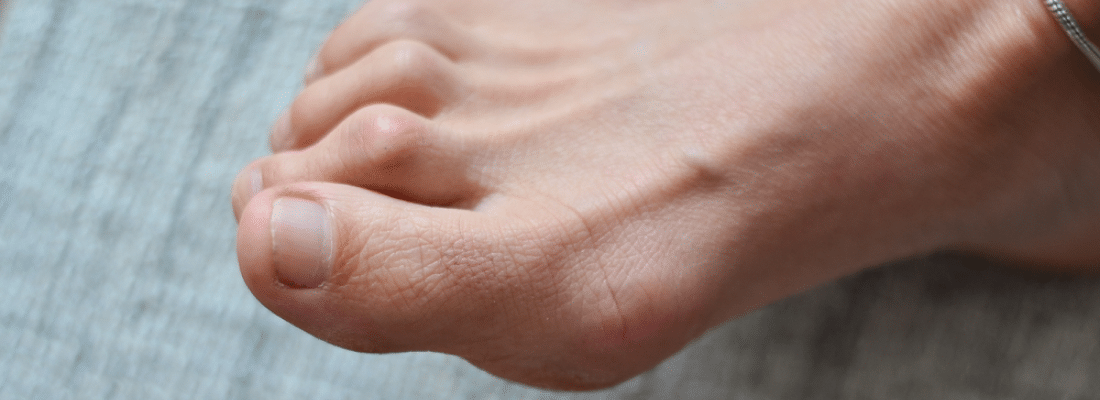Hammer toes & Hammer toe Surgery

What is Hammer Toe?
Hammer toe is a common condition that typically affects any one of the middle three toes, causing it to bend upward at the joint, resulting in a hammer-like appearance. This abnormal bending is usually caused by muscle imbalances, where certain muscles weaken, leaving the tendons in the toe to bear increased pressure. Over time, this strain on the tendons and ligaments can lead to a permanent deformity of the joint. Hammertoes can cause discomfort or pain, especially when walking or wearing shoes, and the condition may worsen if left untreated.
Corns & Calluses
In some cases, individuals with hammertoe may also develop additional foot issues, such as corns or calluses, due to friction between the raised toe and footwear. Early intervention can help prevent further complications, and treatments range from wearing custom orthotics to surgical correction in severe cases.
Common Causes of Hammer Toe
Hammertoes are often caused by a variety of factors, with prolonged use of poorly fitting footwear being one of the most common contributors. Shoes that are pointy, tight, or have high heels can force the toes into an unnatural position, creating long-term pressure that leads to the development of hammertoe. Over time, this continuous strain can cause the muscles and tendons in the toes to weaken, resulting in the characteristic upward bending of the toe joint. Aside from footwear, other health conditions can also increase the risk of hammertoe. Diabetes-related complications, such as nerve damage and poor circulation, can lead to muscle imbalances in the feet, making it difficult to control the toes properly.
Similarly, spinal cord injuries can disrupt the muscles that stabilize the toes, contributing to the deformity. It’s important to address these underlying causes early to prevent the progression of hammertoe and to explore treatment options that may include orthotics, exercises, or even surgery for more advanced cases.

Start living pain-free again
How Podiatrists Treat Hammer Toe:
- Depending on your case history, we at University Foot Associates first analyze and prepare a comprehensive healing plan. We then stick to this and help to heal your condition as soon as possible.
- Generally, podiatrists suggest wearing roomier and more comfortable shoes or using pads or over-the-counter splints. When this does not solve the issue, the next option recommended by doctors is a single, outpatient surgery that straightens the toe joint.
- Based on your condition, there are various surgery possibilities-
Tendon Transfer
- Here, the tendons are rerouted from the bottom to the top of the toe for straightening purposes.
Joint resection
- Here, the end of the bone at the joint is removed and pins are placed temporarily to keep the toe straight.
Fusion
- The most common surgical procedure for hammertoes, here, both ends of the bones are cut at the fixed joint. A pin or K-wire is temporarily used to keep the toe straight. Once done, the pin is removed. A newer technique used currently is when a rod or screw is permanently inserted.
Risk Factors for Hammer Toe:
- Generally, people who have unusually long toes, have hurt their toes many times, or those patients who have rheumatoid arthritis are at risk to develop hammertoe.
Hammertoe FAQs:
Q: How do you treat a hammer toe?
A: Painful symptoms can be managed with orthotics and wide shoes. Hammertoe can be improved with a simple minimally invasive procedure done in the office without the need of general anesthesia. There is minimal downtime undergoing this procedure and minimal to no pain.
Q: Can you straighten hammer toes?
A: Conservative treatments for hammertoe can slow the progression of the joint deformity. To straighten the joint, an in-office procedure that is minimally invasive with minimal downtime can be performed.
Q: Do hammertoes go away naturally?
A: Hammertoes are a progressive condition, meaning they will not go away by themselves. It is easier to correct the hammertoe if you catch it early. A podiatrist can assess the degree of severity and recommend a proper treatment plan.
Q: What does a hammer toe look like?
A: The affected toe bends and curls and multiple joints in the toe.
